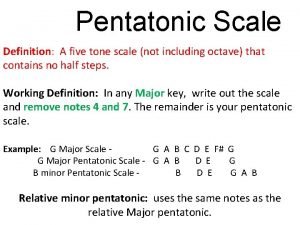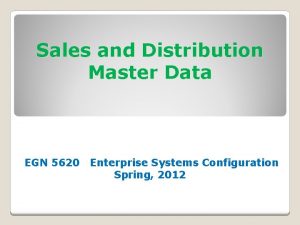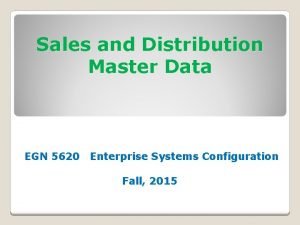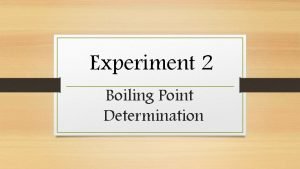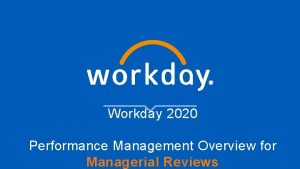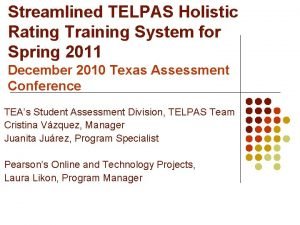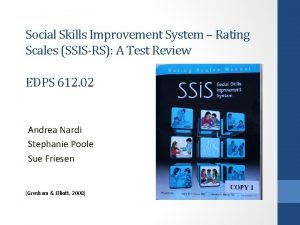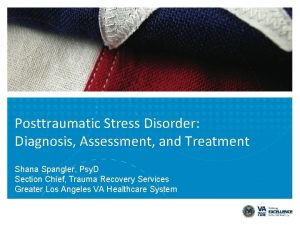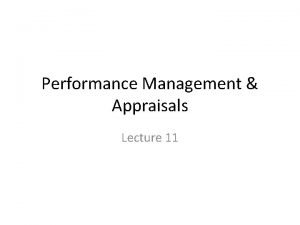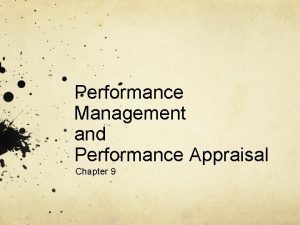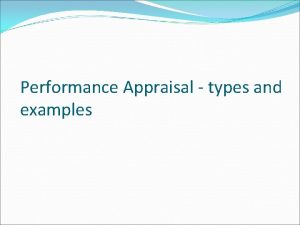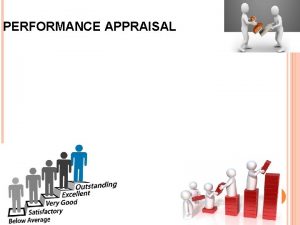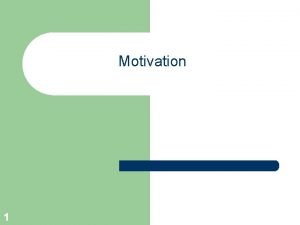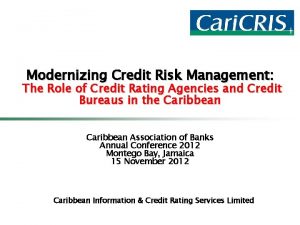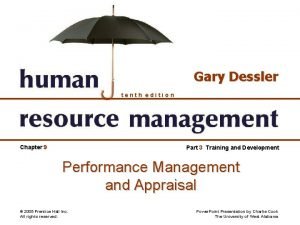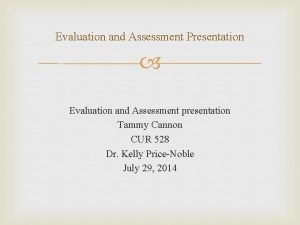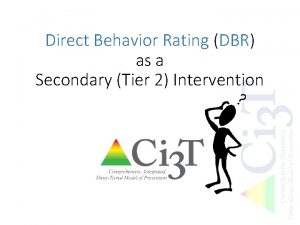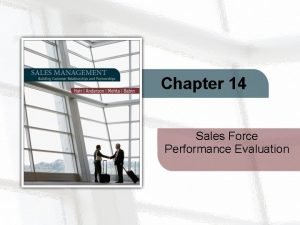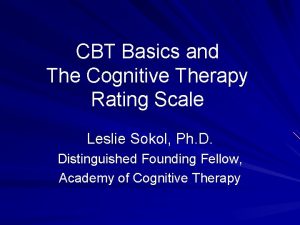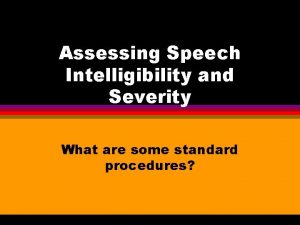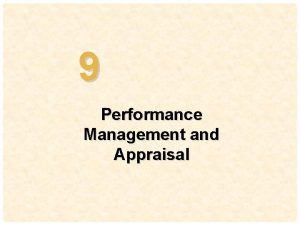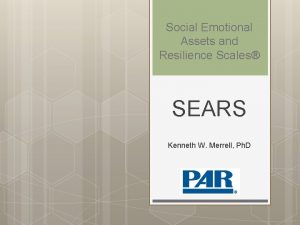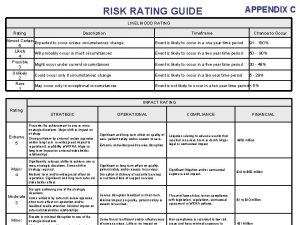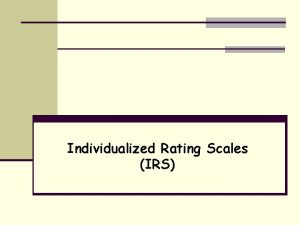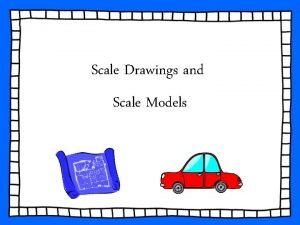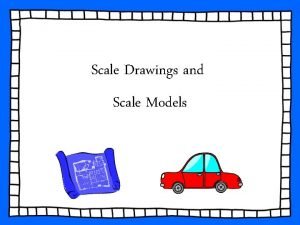Module Three Rating Determination The Five Point Scale












































- Slides: 44

Module Three

Rating Determination…

The Five Point Scale

The Five Point Scale

The Five Point Scale

The Five Point Scale

The Five Point Scale

The Five Point Scale



Your employee is consistently meeting the performance expectation. 3


Why Rate Performance at All? En e ma rgize wo ke e s sta rk c xce ff to or f s y a o w p ntri tion es i f i t n e e t v b Id o h utio al pr e m i o a t gen ns staff Is a fair to cy method of compari ng the w ork contribu tions of staff after the performa nce evaluatio n period is complet ed Value Added


Clearly identify for the employee where they excel, meet expectations and need to improve. It is a way to communicate with the employee. Clearly identify for you, as the supervisor, where you may help your employees improve.



Avoid Common Tendencies When Rating

Avoid Common Tendencies When Rating Leniency

Avoid Common Tendencies When Rating Halo Effect

Avoid Common Tendencies When Rating Discrimination

Avoid Common Tendencies When Rating No one is perfect

Avoid Common Tendencies When Rating Horns Effect

Avoid Common Tendencies When Rating Recent Behavior

Avoid Common Tendencies When Rating Reward

Avoid Common Tendencies When Rating

Avoid Common Tendencies When Rating

Avoid Common Tendencies When Rating

Differentiating Performance Levels

Differentiating Performance Levels

Differentiating Performance Levels RUBRICv v v

Differentiating Performance Levels



At the beginning of the rating period…









Want to Learn More? Additional training is available on: • Microsoft Word • Microsoft Excel • Microsoft Power. Point • Microsoft Access • Developing Your Leadership Potential • Stress Management • Increasing Your Productivity • Definition of Leadership Can’t find what you are looking for? The Office of Training and Development can consult with you on your training gaps. Visit the training calendar or contact Training Manager, Charlie Waters at 850 -245 -7109 for more information.
 Riset rating dan non rating
Riset rating dan non rating Pentatonic music definition
Pentatonic music definition Air self determination
Air self determination Air self determination scale
Air self determination scale Shipping point determination
Shipping point determination Shipping point determination sap
Shipping point determination sap Boiling point determination experiment
Boiling point determination experiment Workday rating scale
Workday rating scale Vbi interview questions
Vbi interview questions Rating scale examples 1-5
Rating scale examples 1-5 Supports intensity scale rating key
Supports intensity scale rating key Texas assessment.gov/telpastrainingcenter
Texas assessment.gov/telpastrainingcenter Ipcr comments and recommendations sample
Ipcr comments and recommendations sample Social skills improvement system sample report
Social skills improvement system sample report Summated rating scale adalah
Summated rating scale adalah Va ptsd rating scale pdf
Va ptsd rating scale pdf A critical incident employee appraisal method collects
A critical incident employee appraisal method collects Graphic rating scale
Graphic rating scale Direction sharing performance management
Direction sharing performance management Forced choice method of performance appraisal
Forced choice method of performance appraisal Bars performance appraisal
Bars performance appraisal Pcit therapy
Pcit therapy Extrinsic reinforcement definition
Extrinsic reinforcement definition Credit rating scale
Credit rating scale Jenis skala psikologi
Jenis skala psikologi Semantic differential scale example
Semantic differential scale example Graphic rating scale method
Graphic rating scale method Graphic rating scale example
Graphic rating scale example Presentation rating scale
Presentation rating scale Ip rating scale
Ip rating scale Tanner rating scale
Tanner rating scale Direct behavior ratings
Direct behavior ratings Frankel behaviour rating scale
Frankel behaviour rating scale Methods of performance appraisal
Methods of performance appraisal Palin parent rating scale
Palin parent rating scale Evaluating sales force performance ppt
Evaluating sales force performance ppt Chapter 11 performance appraisal - (pdf)
Chapter 11 performance appraisal - (pdf) Performance management vs performance appraisal
Performance management vs performance appraisal Cognitive conceptualization diagram
Cognitive conceptualization diagram Pcc severity rating scale
Pcc severity rating scale Metalinguistic
Metalinguistic Development
Development Paired comparison method of performance appraisal
Paired comparison method of performance appraisal Social emotional assets and resilience scales
Social emotional assets and resilience scales Hedonic rating scale
Hedonic rating scale

